Oswego Animal Hospital
What to Expect
We understand that pet emergencies can be stressful, overwhelming, and frightening. When you bring your pet, you can do so with total confidence that both your pet’s needs and your concerns will be addressed. You will also be provided with a thorough treatment plan – including cost of care – to ensure transparency while safeguarding your pet’s health.
While doing so is not mandatory, you are welcome to bring with you any relevant information – such as previous medical records and/or current medications. If your pet requires frequent treatment due to a chronic condition or recurring illness, we suggest maintaining a journal to help keep track of useful information, such as treatment schedules and responses to therapies.
Recognizing A Pet Emergency
You’re not alone if you’re wondering, "How do I know if my pet is having an emergency?" Seek medical attention immediately if your pet exhibits any of the following symptoms:
Trauma (motor vehicle accident, animal attacks, falls)
Problems with eyes or eyesight
Suspected broken bones
Difficulty breathing
Loss of consciousness
Collapse, weakness, and/or the inability to support weight or stand up
Seizures (lasting more than 2 minutes or multiple seizures within a 24 hour period)
Straining or unable to urinate
Difficulty or pain while defecating
Bleeding from the eyes, nose, mouth, and/or blood in vomit, urine, or feces
Excessive vomiting/diarrhea (particularly if lasting more than 24 hours)
Not eating/drinking for more than 24 hours
Pain (whining, panting, inability to get comfortable, arching back)
Distended and/or hard abdomen and/or retching/vomiting attempts
Ingestion of household chemicals (soap, drain cleaner, potpourri, essential oils)
Ingestion of human or other pet's medications
Ingestion of foreign object(s)
Ingestion of chocolate, grapes, raisins, sugar-free products containing xylitol, rat/mouse bait, garlic, rodenticides, petroleum products, and/or antifreeze
Heatstroke
Difficulty delivering puppies/kittens (active contractions with no birth within 60 minutes or more than 4 hours between deliveries)
Emergency Services Offered
Overnight hospitalized care
Open floor plans for hospitalized patients
Isolation unit
Post-surgical monitoring
Oxygen therapy
Blood pressure monitoring
Diagnostic laboratory services
